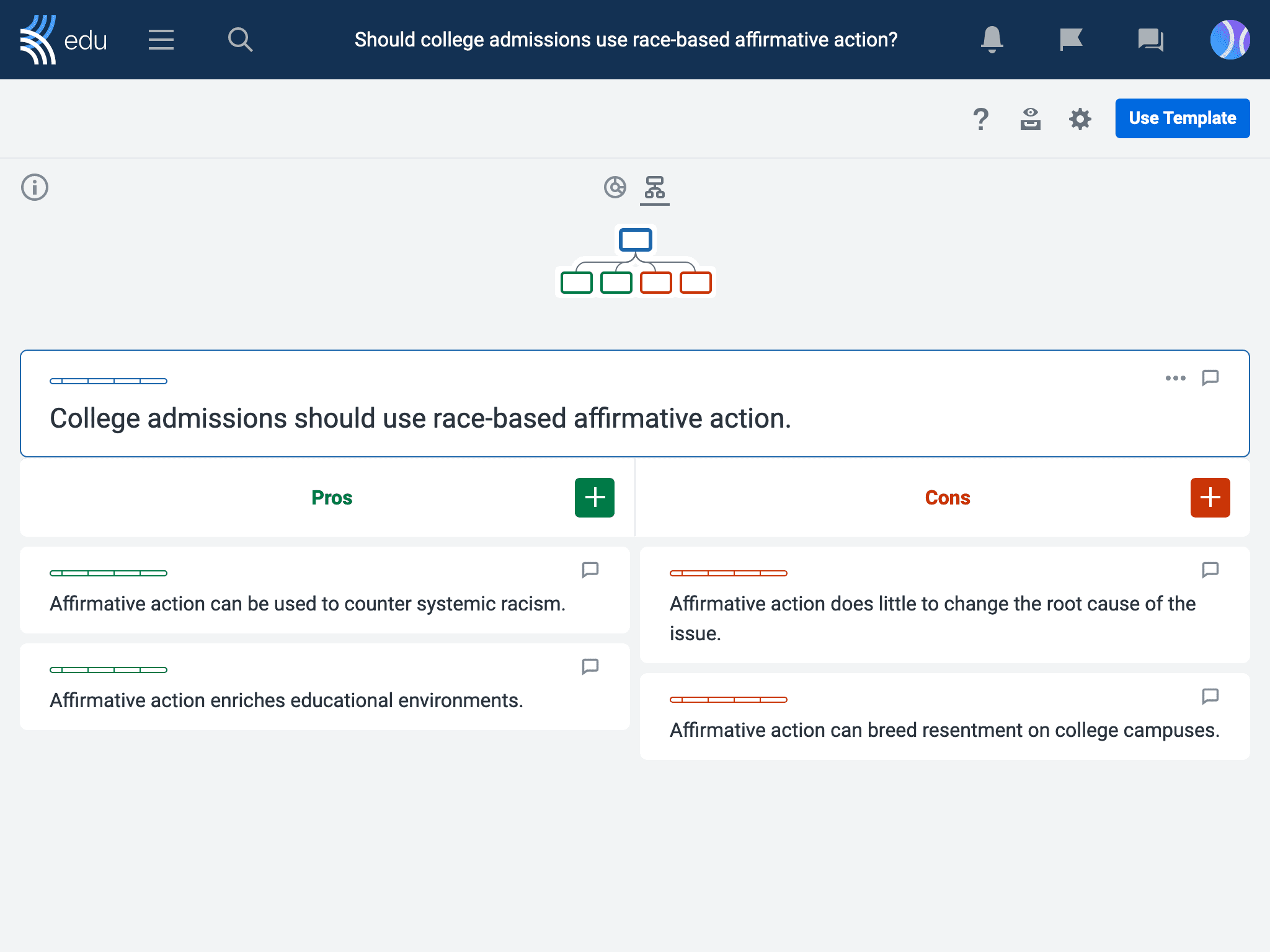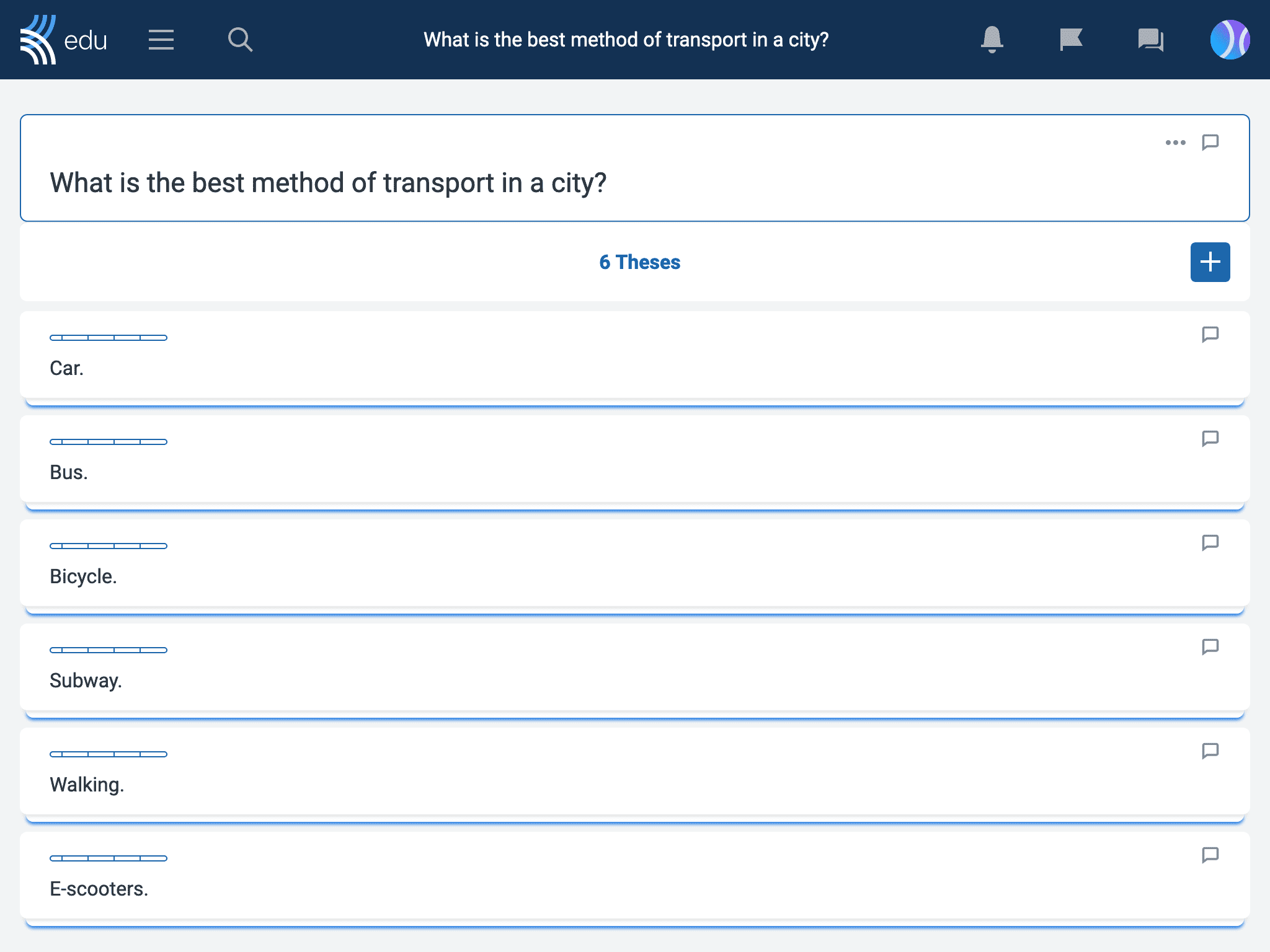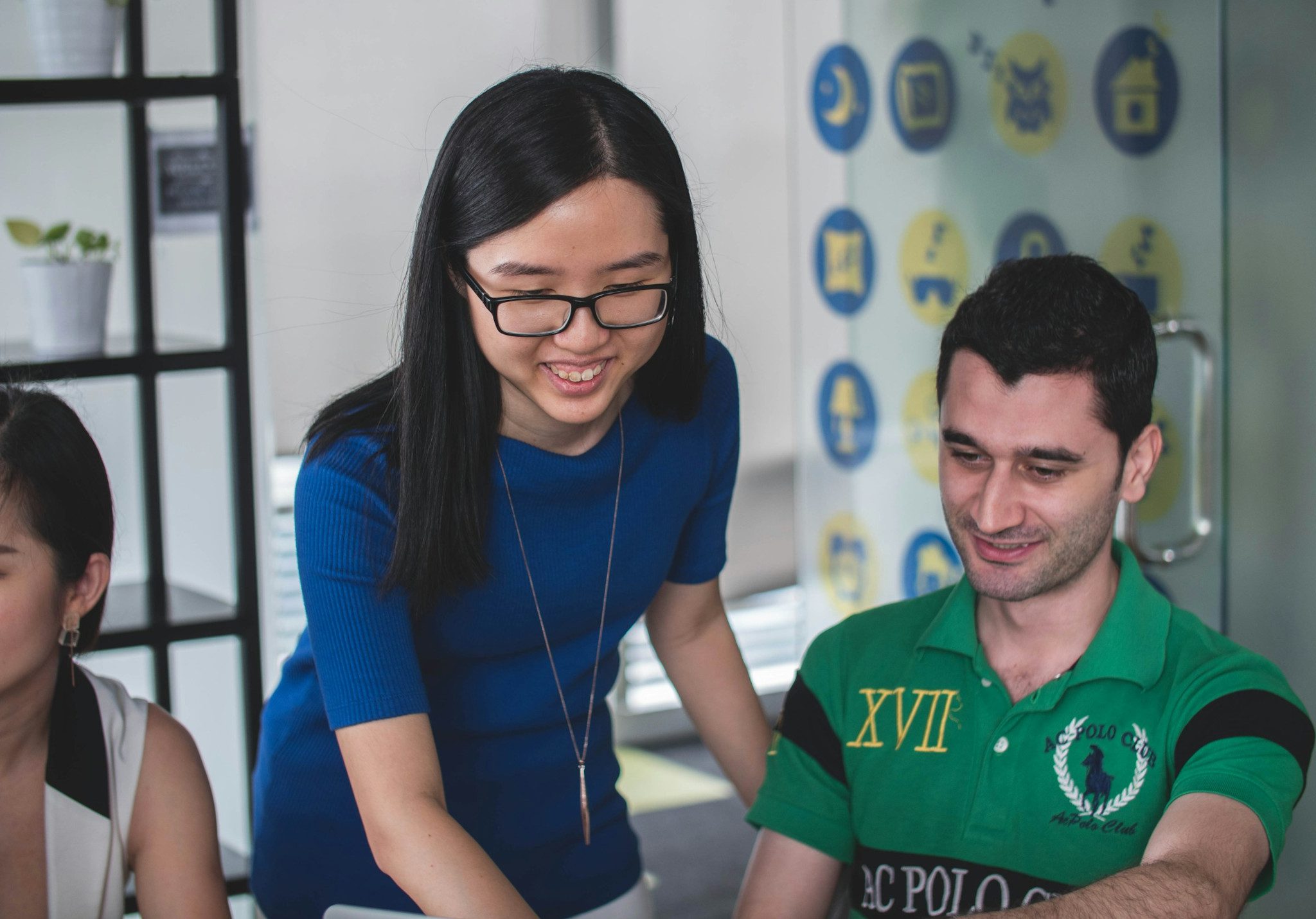By making a point of developing student’s political and media literacy skills, educators help students navigate the complexities of an information-rich, global media landscape to help them become informed, engaged citizens. Not only that, a greater awareness of politics and media-related concepts will further develop students’ civic literacy skills.
In this article, we’ll explore what media literacy and political literacy are, why it’s important for educators to teach these skills, and how you can support your students’ development in these areas (for free!) with Kialo Edu.
What is media literacy?
Media literacy skills help students take a mindful approach to how they engage with information. It equips students with the tools to decode media messages and understand the influence of those messages.
That way, when students are faced with a barrage of information from opposing opinions on a topical issue, they’ll be able to sift through it to ensure they are appropriately informed.
With these skills, students are able to use media effectively to their advantage as they create content.
What is political literacy?
Political literacy refers to students having enough competencies to exercise their political rights and participate meaningfully in democratic processes, including voting.
Thus, politically literate individuals have a good understanding of political concepts, processes, and institutions. They are knowledgeable about current political events and social challenges, and can appreciate diverse perspectives.
Most importantly, they can use critical thinking to reflect on the government operations and political decisions that directly affect their lives and the wider community.
Why is it important to teach media literacy and political literacy?
Media and political literacy is vital to giving our students the confidence and ability to make their own informed decisions and opinions. These literacies empower individuals to make their voices heard, hold their political representatives accountable for their actions, and advocate for change.
Though how politics work in the real world may feel far removed from our students’ daily reality, politics is deeply embedded in every aspect of society. Political literacy can help students engage in constructive dialogue amid differences of opinion by developing understanding for different viewpoints to foster positive relationships.
And by supporting participation in democratic processes, political awareness can help students become active in working towards the well-being of their community.
Additionally, students now need to navigate challenges such as encountering bias in media reporting, mis- and dis-information, and growing AI-generated content. Being able to critically analyze the information they’re presented with benefits students in the long term, as they discern quality from questionable information to combat online manipulation.
Why are schools a good place for students to learn about media literacy and political literacy?
Conversations about politics are often heated with the potential for emotions to run high. By providing a safe and structured learning environment, educators can help students objectively explore the background of topical issues, cutting through the noise of divisive political discourse and outrage often seen on social media.
What’s more, many real-world issues can be linked to curriculum standards. Addressing these topics shows students the relevance of the classroom content. In this context, teachers can introduce students to diverse perspectives on a topic.
The classroom can help students form their own viewpoints by giving access to monitored and scaffolded discussions and debates alongside their peers. Not only that, but educators can take advantage of student-to-student interactions to foster respectful dialogue and disagreement.
Activities to teach media literacy and political literacy with Kialo Edu
Kialo discussions offer a structured way for students to delve into these complex debatable topics associated with political and media literacy.
Discussions break the arguments down into understandable chunks to help students get to grips with the issues involved, whether that’s the benefits and challenges of democracy, the impact of political advertising, or the promises made by election candidates.
Not only that, Kialo discussions help maximize participation, which means everyone will get to chance to have their say! Here are some suggested activities to try out in the classroom to help your students improve their political and media literacy skills.
1. Have students investigate and map out policy decisions to explore the reasoning behind them

Educators can help students question the political decisions taken on their behalf, while simultaneously increasing their knowledge on the subject.
Using a Kialo discussion, teachers can use a multi-thesis discussion to examine real-life policy decisions, alongside hypothetical alternatives. This lets students critically examine the intended outcomes of a policy within its broader socio-economic context.
Alternatively, use a single-thesis discussion, such as on using affirmative action for college admissions, to delve into a policy in detail. This takes a future-oriented approach to predict the impact the policy might have on different groups.
As an extension, hold a mock press conference or town hall session in class. Some students can take on the role of policy designers, while their classmates step into the shoes of concerned citizens and journalists.
2. Develop a solution for a local issue to practice respectful decision-making
Civic engagement plays a significant role in improving communities by bringing people together to address local issues.
Task students with first identifying a problem in their local community or school. Then, break them up into small groups to explore different possible solutions in a multi-thesis Kialo discussion, such as campaigning for the best method of transport in a city to alleviate traffic.

In setting up the activity, teachers can encourage students to consider areas such as funding and different perspectives to identify potential roadblocks to their plans. And, by asking them to figure out the practical side of implementing their solution as a follow-up, teachers can give students a glimpse into the complexities of developing such actions and policies.
Educators can also build their own discussion as an alternative way of introducing or reinforcing new classroom content. In doing so, educators can ensure diverse perspectives and lesser-known details are included, countering the echo chamber effect of many social media spaces.
Use the Background Info of a Kialo discussion to add instructions, a brief overview of the topic, or any necessary context. To get students actively engaging with the content you’ve added to the discussion, have them comment on claims with observations or questions and vote on claims as they work through it.
Or, you might encourage them to add more claims to contribute to it too. This sample discussion on the causes of World War I may provide some inspiration on how to approach a class discussion this way.
4. Critically analyze a political speech to have students examine political communication strategies
In analyzing a political speech, students are encouraged to think critically about the content, language, and rhetorical devices used by politicians. Guide them to consider the arguments made in the speech by looking for evidence, logical fallacies, and questionable claims.
Students might look at how the speech appeals to the audience on an emotional level, and tactics politicians use to keep their attention. Are there any parts where the audience might really feel heard or, alternatively, manipulated?
Next, watch media coverage of the speech to study how commentators reported on it. Bring students’ attention to the tone and language used and prompt them to compare media representation of the speech with what was actually said. Adding an example of very neutral reporting will add an interesting contrast to more sensational or just subtly biased approaches.
5. Have students create a media report to focus on responsible and ethical media practices

Help students get to grips with what’s in the news while teaching them to become reliable content creators by assigning them a political current event to report. An audio podcast is an engaging and creative option to develop their multimedia and digital fluency skills, while a written newspaper format can provide real-world practice in informative writing.
Put students in small groups to research background information for their report from a variety of media sources. Students can use a Kialo discussion as a way to organize their findings, explore the competing opinions, and record the evidence for their claims.
Setting a task to add sources will explicitly bring focus to this requirement. Emphasize the importance of unbiased reporting, fact-checking from different sources, and seeking out reliable evidence before working out the text or dialogue for their report.
As a follow-up, have a class oral discussion on what students conclude as best practices for media creation and distribution — you can even draw up a set of ethical guidelines together.
6. Explore a current event from different sides to encourage perspective-taking
Politics can be highly divisive for good reason — there are often valid arguments and priorities on competing sides. You can use a Kialo discussion to explore student-initiated questions and give them the space to dig into arguments they don’t necessarily agree with.
In doing so, educators can encourage an approach of inquiry and developing understanding even when faced with more controversial topics. Kialo discussions also have an anonymous participation mode to add that extra buffer when needed.
To encourage perspective-taking after a Kialo discussion, teachers might simply ask students to vote on the claims from a different viewpoint, such as that of a concerned citizen, a member of the opposition party, or an expert in the field.
Follow up with a debriefing session to summarize and synthesize what each group learned from the discussion. A metacognitive practice such as debriefing can bring closure to an activity to help students link the content to their own lives and experiences.
Teachers can also use this time to correct any misconceptions, clarify unresolved questions, or acknowledge interesting contributions from students.
These are just a few ideas on how you can practice media and political literacy with your students. We’d love to hear if you’ve tried them out, or any other approaches you like to take. Please do get in touch with your ideas at feedback@kialo-edu.com, or on any of our social media platforms.
If you’re looking for more ideas on teaching civics education in the classroom, we’ve got lots more resources to help your students become active, engaged citizens!

